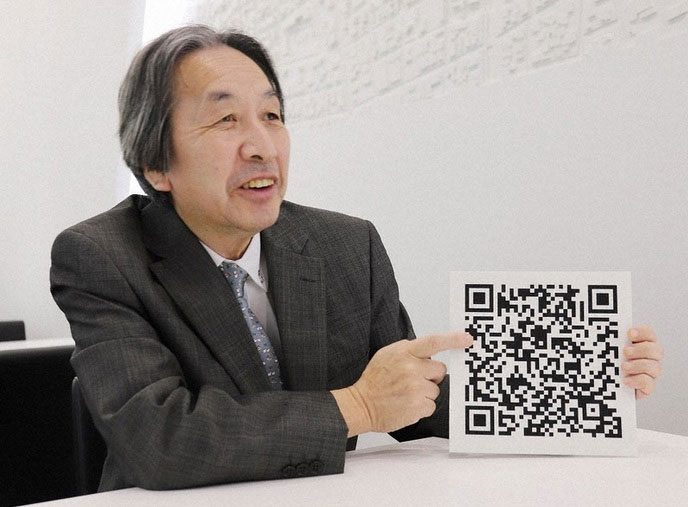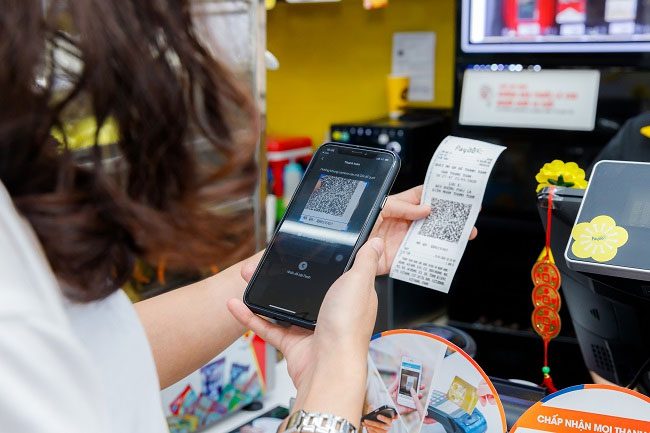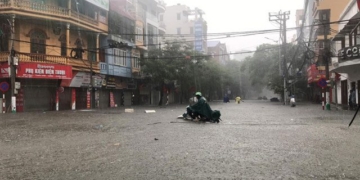The square QR codes, which are now incredibly popular and ubiquitous, were actually invented by a Japanese engineer 30 years ago.
According to the Mainichi Shimbun, the inventor is Masahiro Hara (67 years old). Hara worked at Denso Wave, a company specializing in industrial equipment that is part of the Toyota Group. He shared the reason for creating the QR code: “Initially, I created them to track car parts in the factory.” This was in 1992 when Hara was still working in the barcode research and development department of Denso Corp, the parent company of Denso Wave.

Masahiro Hara – the inventor of the QR code. Photo: mainichi.jp
Denso Corp focused on research and development to modernize Toyota’s kanban production method, also known as the just-in-time method. At that time, Denso Corp used barcodes to track car parts being shipped. However, barcodes could only encode about 20 characters or numbers. The more information needed to describe an item, such as manufacturing and shipping history, the more barcodes were required, leading to a single product needing around 10 barcodes.
Workers used scanners to read the barcodes of each product every time they transported them. During busy periods, thousands of barcodes needed to be scanned, which posed a significant challenge for efficiency.
Hara set out to develop a new type of code that could hold more information and be scanned effectively. He focused on two-dimensional (2D) codes, which had begun to be developed in the United States. While barcodes are considered one-dimensional (1D) with vertical lines placed next to each other, 2D codes consist of small squares arranged in a grid like a mosaic, allowing them to contain more information in a small space. However, inconveniences arose when shapes or other characters appeared near the code, causing scanners to struggle to differentiate and taking time to read the information accurately.
After several trials and errors, Hara’s QR code was born. If you look closely at a QR code, you can see smaller black squares in three corners of the square. These are known as “position detection patterns,” which are very special to QR codes. The idea came to Hara when he looked out the window of a train and saw a building with misaligned windows on the upper floors.
Thanks to the “position detection patterns,” scanners can quickly recognize QR codes and read the information contained within. This is one of the appealing features of QR codes and also part of the name of this code: “QR” stands for “quick response.”
In addition to quick and accurate recognition, the amount of information that can be encoded in a QR code has significantly increased, up to 1,800 Japanese kanji characters, equivalent to an A4-sized document. With these advantages, QR codes were introduced to the world in 1994.
Interestingly, Denso Corp chose not to patent the QR code. The purpose of Denso Corp was to make QR codes widely popular, thereby increasing the company’s profits through the sale of scanners and related equipment.
At that time, only organizations used QR codes. The development of mobile phones marked the beginning of an explosion that made QR codes known to everyone. In 2002, Sharp Corporation (Japan) launched a mobile phone with a QR code scanner. Other manufacturers soon followed suit.

People scanning QR codes for payment.
When consumers owned scanners, corporations began using QR codes embedded with information linking users to their websites.
With the advent of smartphones, the use of QR codes has exceeded Hara and his colleagues’ expectations. What surprised him the most is that QR codes are now used for payments.
The online payment platform Alipay started using QR codes to exchange payment amounts and other related information.
Hara laughed and said: “I never thought that QR codes would be used for monetary exchange. I still worry that serious errors may occur.”
In 2014, Hara and his team became the first Japanese citizens to receive the European Inventor Award presented annually by the European Patent Office.
Hara stated that after retiring, he wants to engage in agriculture. He shared: “I want to develop many new varieties of fruits and vegetables to make them tastier.” This goal of Hara’s is quite close to his work as an engineer.




















































